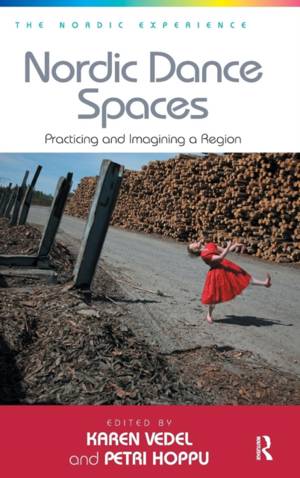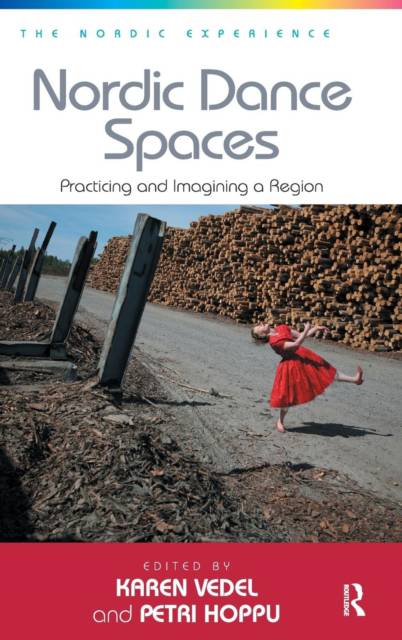
- Afhalen na 1 uur in een winkel met voorraad
- Gratis thuislevering in België vanaf € 30
- Ruim aanbod met 7 miljoen producten
- Afhalen na 1 uur in een winkel met voorraad
- Gratis thuislevering in België vanaf € 30
- Ruim aanbod met 7 miljoen producten
Zoeken
Nordic Dance Spaces
Practicing and Imagining a Region. Edited by Karen Vedel and Petri Hoppu
Petri Hoppu
€ 290,45
+ 580 punten
Uitvoering
Omschrijving
Dance has been connected to the practices and ideologies that have shaped notions of a Nordic region for more than a century and it is ingrained into the culture and society of the region. This book investigates different dance phenomena that have either engaged with or dismantled notions of Nordicness. Looking to the motion of dancers and dance forms between different locations, organizations and networks of individuals, its authors discuss social dancing, as well as historical processes associated with collaborations in folk dance and theatre dance. They consider how similarities and differences between the Nordic countries may be discerned, for instance in patterns of reception at the arrival of dance forms from outside the Nordic countries - and vice versa, how dance from the Nordic countries is received in other parts of the world, as seen for example in the Nordic Cool Festival at the Kennedy Centre in 2013. The book opens a rare window into Nordic culture seen through the prism of dance. While it grants the reader new insights into the critical role of dance in the formation and imagining of a region, it also raises questions about the interplay between dance practices and politics.
Specificaties
Betrokkenen
- Auteur(s):
- Uitgeverij:
Inhoud
- Aantal bladzijden:
- 276
- Taal:
- Engels
- Reeks:
Eigenschappen
- Productcode (EAN):
- 9781409470014
- Verschijningsdatum:
- 24/03/2014
- Uitvoering:
- Hardcover
- Formaat:
- Genaaid
- Afmetingen:
- 156 mm x 234 mm
- Gewicht:
- 566 g

Alleen bij Standaard Boekhandel
+ 580 punten op je klantenkaart van Standaard Boekhandel
Beoordelingen
We publiceren alleen reviews die voldoen aan de voorwaarden voor reviews. Bekijk onze voorwaarden voor reviews.











